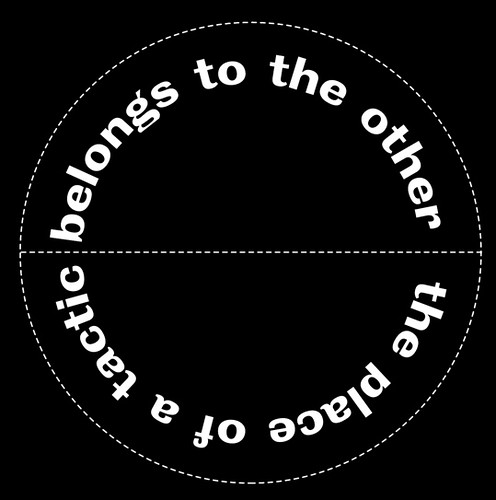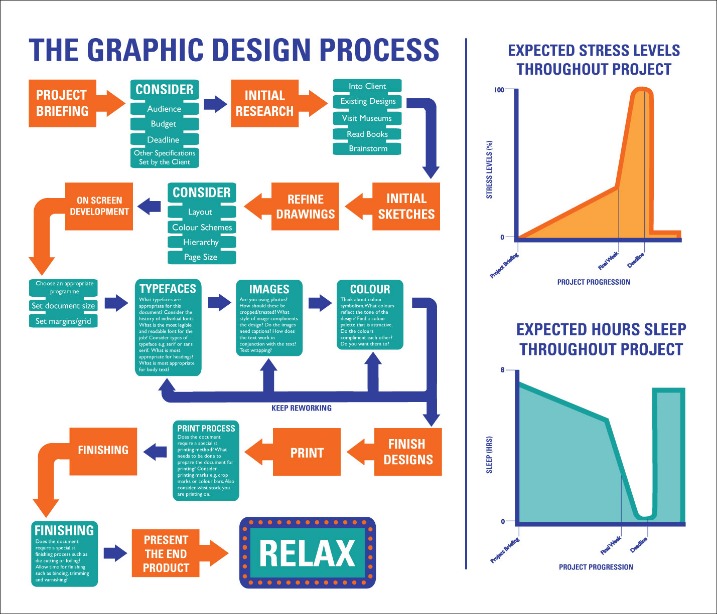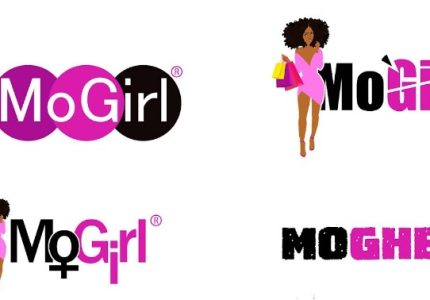Benefits of Taking Graphic Design Courses Online
Taking graphic design courses online offers numerous advantages for aspiring designers. It provides flexible learning options, allowing students to study at their own pace and from any location. Online courses also grant access to a wide variety of resources, expert instructors, and community forums that enhance the learning experience. Whether you’re a beginner or looking to upgrade your skills, these courses make acquiring essential graphic design knowledge more accessible and convenient.
Flexibility and Convenience
Taking graphic design courses online offers numerous benefits, especially in terms of flexibility and convenience. Students can learn at their own pace, fitting lessons into their busy schedules without the need to attend physical classes. This flexibility allows learners to balance their education with work, family, and other commitments, making it easier to pursue their passion for design. Additionally, online courses provide access to a wide range of resources, tutorials, and expert instructors from around the world, enabling students to customize their learning experience and acquire skills that are relevant and up-to-date in the ever-evolving field of graphic design.
Wide Range of Course Options
Taking graphic design courses online offers a multitude of benefits, especially in today’s digital learning environment. Students can access high-quality education from the comfort of their homes, allowing for flexible scheduling that fits individual lifestyles. The availability of a wide range of course options ensures that learners can find programs tailored to their specific interests and skill levels, from beginner fundamentals to advanced design techniques. This diverse selection enables students to continually expand their knowledge and stay updated with the latest industry trends. Additionally, online courses often provide access to a variety of resources, including tutorials, forums, and mentorship opportunities, fostering a supportive learning community. Overall, online graphic design courses empower aspiring designers with the skills, knowledge, and flexibility needed to succeed in a competitive creative field.
Cost-Effectiveness
Taking graphic design courses online offers numerous benefits, especially when it comes to cost-effectiveness. Online courses often have lower tuition fees compared to traditional in-person programs, making quality education more accessible to a wider audience. Additionally, learners save on expenses related to commuting, accommodation, and printed materials, as many resources are available digitally. The ability to learn at one’s own pace also helps students manage their budgets more effectively, allowing them to invest in necessary tools and software without the added financial burdens of physical classroom settings. Overall, online graphic design courses provide a budget-friendly pathway to developing valuable skills in a flexible and economical manner.
Access to Expert Instructors
Taking graphic design courses online offers numerous advantages, especially in gaining access to expert instructors from around the world. These courses provide learners the opportunity to learn directly from industry professionals who bring practical insights and up-to-date knowledge to the virtual classroom. This exposure helps students develop a deeper understanding of design principles, techniques, and trends, enhancing their skills effectively.
Moreover, online platforms often feature personalized feedback and interactive sessions, allowing students to clarify doubts and refine their work under the guidance of experienced mentors. This direct access to experts accelerates the learning process and enables students to build a strong portfolio that showcases their capabilities. Overall, online graphic design courses provide flexibility, expert guidance, and a rich learning experience that can significantly benefit aspiring designers in their careers.
Types of Online Graphic Design Courses
Online graphic design courses offer a diverse range of learning options to help aspiring designers develop their skills and creativity. From beginner-friendly tutorials to advanced specialized programs, these courses cater to various skill levels and interests. Whether you prefer video lessons, interactive projects, or comprehensive certifications, there are numerous types of online graphic design courses available to suit your learning style and career goals.
Beginner Courses
Online graphic design courses for beginners offer a variety of formats to help students develop their skills and understanding of design principles. These courses are accessible from anywhere and cater to different learning styles, making them ideal for those starting their journey in graphic design.
- Video Tutorials: These courses feature step-by-step video lessons covering fundamental concepts and software skills such as Adobe Photoshop, Illustrator, and Canva.
- Interactive Courses: These include quizzes, assignments, and projects that allow students to apply what they learn in a hands-on manner.
- Self-Paced Courses: Designed for flexibility, these courses let learners progress at their own speed, often including downloadable resources and practice exercises.
- Live Online Classes: Conducted in real-time with instructors, these courses offer direct interaction, feedback, and personalized guidance.
- Specialized Beginner Courses: Focused on specific areas like logo design, branding, or social media graphics, ideal for learners seeking targeted skills.
Advanced Graphic Design Programs
Online graphic design courses offer a wide range of options to suit different skill levels and career goals. Basic courses typically cover fundamental design principles, software tutorials, and foundational techniques, making them ideal for beginners. Advanced programs delve deeper into specialized topics such as branding, user interface and user experience (UI/UX), animation, and digital illustration. These courses often include project-based learning, portfolio development, and industry-specific applications to prepare students for professional roles. Many platforms also offer certification options upon completion, providing valuable credentials for advancing a career in graphic design. Whether you are just starting out or seeking to enhance your expertise, online courses can provide flexible and comprehensive education tailored to your needs.
Specialization Courses (e.g., UI/UX, Typography, Branding)
Online graphic design courses offer a variety of options for learners to enhance their skills and specialize in specific areas of design. These courses range from broad introductory classes to targeted specialization programs that focus on particular aspects of graphic design.
Specialization courses in graphic design include areas such as UI/UX design, typography, branding, illustration, and motion graphics. UI/UX courses teach skills related to designing user interfaces and enhancing user experience, often combining usability principles with aesthetic design. Typography courses focus on the art of arranging type effectively, helping students understand font selection, hierarchy, and readability. Branding courses cover the creation of visual identities, including logos, color schemes, and brand strategies to help companies establish a strong presence. Illustration and motion graphics programs teach techniques for creating compelling visuals and animations, vital for digital content, advertising, and multimedia projects. These specialization courses allow students to develop expertise in niche areas of graphic design, making them more competitive and versatile in the industry.
Certification Programs
Online graphic design courses offer a diverse range of options for learners to develop their skills and enhance their portfolios. These courses vary from beginner to advanced levels and are available in multiple formats, including video tutorials, interactive projects, and live sessions. Certification programs in graphic design provide formal recognition of your skills, which can boost your credibility and employability in the competitive design industry.
Types of online graphic design courses include introductory courses that cover the fundamentals of design principles, typography, color theory, and software basics. Specialized courses focus on areas such as branding, user experience (UX), user interface (UI), and digital illustration. Some programs are project-based, enabling students to work on real-world assignments, while others emphasize theoretical knowledge and design theory.
Certification programs are often offered by renowned online learning platforms, design schools, and software companies. They provide students with a structured curriculum, assignments, and assessments to ensure comprehensive learning. Completing these certification programs can demonstrate proficiency in tools like Adobe Photoshop, Illustrator, InDesign, or emerging platforms like Canva and Figma, and can significantly enhance a designer’s professional profile.
Popular Platforms Offering Online Graphic Design Courses
With the increasing popularity of digital learning, many platforms now offer comprehensive online graphic design courses suitable for beginners and professionals alike. These platforms provide flexible schedules, interactive content, and expert guidance to help learners develop their creative skills. Whether you’re looking to boost your career or explore a new hobby, there are numerous popular platforms accessible from anywhere in the world to kickstart your graphic design journey.
Coursera
Coursera is a popular platform offering a wide range of online graphic design courses taught by renowned universities and industry experts. It provides flexible learning options for students interested in developing their skills in visual communication, typography, branding, and digital design. Courses on Coursera often include video lectures, assignments, and peer-reviewed projects, enabling learners to gain practical experience and build a strong portfolio. The platform also offers specialization programs and certification options that can enhance a professional’s career prospects in graphic design. With a user-friendly interface and access to high-quality content, Coursera remains a top choice for those seeking to learn graphic design online.
Udemy
Udemy is a leading platform that offers a wide range of online graphic design courses suitable for beginners and advanced learners alike. With thousands of tutorials created by industry professionals, students can learn various design tools, techniques, and principles at their own pace. The platform features courses on Adobe Photoshop, Illustrator, InDesign, and more, providing comprehensive content that helps learners develop their skills effectively. Udemy’s flexible learning format, affordable pricing, and user reviews make it a popular choice for individuals seeking to enhance their graphic design expertise online.
Skillshare
Skillshare is a popular platform that offers a wide range of online graphic design courses suitable for beginners and professionals alike. It provides access to numerous classes taught by experienced designers, covering topics such as logo design, typography, Adobe Photoshop, Illustrator, and more. Users can learn at their own pace through video lessons, projects, and community feedback, making Skillshare an excellent choice for anyone looking to enhance their graphic design skills online.
LinkedIn Learning
LinkedIn Learning is a widely recognized platform that offers a variety of online graphic design courses suitable for both beginners and experienced professionals. It provides comprehensive tutorials on tools like Adobe Photoshop, Illustrator, and InDesign, along with courses on design principles, branding, and UX/UI design.
- Wide selection of courses taught by industry experts
- Flexible learning schedule
- Certificates of completion to enhance your portfolio
- Integration with LinkedIn profile for professional networking
- Access to a supportive community of learners
Domestika
Domestika is one of the leading platforms offering online graphic design courses, renowned for its high-quality content and expert instructors. It provides a wide range of courses suitable for beginners and advanced designers alike, focusing on various aspects of graphic design such as branding, illustration, typography, and UI/UX design. The platform fosters a creative community where learners can share their work, provide feedback, and collaborate on projects, enhancing the learning experience.
- Coursera – Offers graphic design courses from top universities and institutions, covering fundamentals and specialized topics.
- Udemy – Features a vast selection of courses taught by industry professionals, suitable for all skill levels and budgets.
- Skillshare – Emphasizes creative and practical courses, including numerous graphic design workshops and project-based classes.
- LinkedIn Learning – Provides professional development courses in graphic design, focusing on skills applicable in the workplace.
- CreativeLive – Hosts live and on-demand classes taught by renowned designers, focusing on creative techniques and industry insights.
- Envato Tuts+ – Offers tutorials and courses on graphic design tools, techniques, and trends for digital creatives.
Key Topics Covered in Online Graphic Design Courses
Online graphic design courses cover a wide range of essential topics to help aspiring designers develop their skills and creativity. These courses typically include foundational concepts such as color theory, typography, and layout design, as well as practical skills like Adobe Photoshop, Illustrator, and other industry-standard tools. Additionally, students learn about branding, visual communication, and portfolio development, preparing them for various careers in the dynamic field of graphic design.
Design Principles and Theories
Online graphic design courses often cover a broad range of key topics essential for developing strong design skills. These areas include understanding fundamental design principles such as balance, contrast, alignment, repetition, proximity, and hierarchy, which help create visually appealing and effective compositions. Students also learn about color theory, typography, and imagery selection, which are crucial for conveying messages and establishing mood. Additionally, courses delve into design theories that underpin visual communication, including concepts of visual storytelling, branding, and user-centered design. Technical skills such as using design software like Adobe Photoshop, Illustrator, and other digital tools are also emphasized to enable students to execute their creative ideas effectively. Overall, these courses aim to equip learners with both theoretical knowledge and practical skills needed for successful graphic design practice.
Software Skills (Adobe Photoshop, Illustrator, InDesign)
Online graphic design courses typically cover a wide range of key topics to help students develop comprehensive design skills. These include fundamental design principles, color theory, typography, layout techniques, and visual communication strategies. Students learn how to create compelling visual content that effectively conveys messages across various platforms.
Essential software skills are a core component of these courses, with a strong focus on industry-standard tools such as Adobe Photoshop, Illustrator, and InDesign. Adobe Photoshop is used for photo editing, raster graphics creation, and image compositing, enabling designers to enhance and manipulate images with precision. Adobe Illustrator focuses on vector graphics, logo design, and scalable illustrations, making it vital for creating clean, scalable artwork. Adobe InDesign is widely used for layout design, including magazines, brochures, and other multi-page documents, providing tools for precise arrangement of text and images. Mastery of these software tools allows students to produce professional-quality designs suited for various media and purposes.
Color Theory and Composition
Online graphic design courses typically cover a wide range of essential topics to help students develop their skills and understanding of visual communication. Among these, color theory and composition are fundamental areas that play a crucial role in creating effective and visually appealing designs.
- Understanding Color Theory: This includes learning about the color wheel, color harmony, contrast, saturation, and how colors influence mood and perception.
- Applying Color in Design: Practical tips on selecting color schemes, creating palettes, and using color to communicate messages effectively.
- Principles of Composition: Covering layout design, balance, hierarchy, alignment, and the rule of thirds to organize visual elements harmoniously.
- Typography and Text Placement: Exploring font choices, readability, and how typography interacts with color and layout.
- Use of Space and Visual Flow: Techniques for guiding the viewer’s eye through a design and ensuring clarity and focus.
- Creating Impactful Designs: Combining color and composition skills to craft compelling visual narratives and branding materials.
Typography and Layout Design
Online graphic design courses offer comprehensive lessons on key topics such as typography and layout design, which are essential skills for any aspiring designer. In these courses, students learn the fundamentals of typography, including font selection, pairing, and hierarchy to create visually appealing and readable designs. Layout design principles are also covered, focusing on composition, balance, and the effective organization of visual elements to guide the viewer’s attention. These topics help students develop a strong understanding of how to structure content creatively and effectively for various media and purposes. Additionally, courses often include practical exercises and software tutorials to reinforce these concepts and prepare students for real-world projects.
Brand Identity and Logo Design
Online graphic design courses offer comprehensive coverage of essential topics such as brand identity and logo design. These courses typically begin with foundational principles of design, including color theory, typography, and composition. Students then delve into creating compelling brand identities, learning how to develop visual elements that communicate a brand’s message effectively. Logo design is often highlighted as a core skill, where learners explore the creative process from concept development to digital rendering, ensuring logos are memorable, versatile, and aligned with brand strategies. Additionally, courses may cover tools like Adobe Illustrator and Photoshop, along with best practices for presenting and refining design concepts.
Tips for Choosing the Right Online Graphic Design Course
Choosing the right online graphic design course can significantly impact your skill development and career prospects. With numerous options available, it’s essential to consider factors such as course content, instructor expertise, reviews, and your personal learning goals. Making an informed decision ensures you gain valuable knowledge and practical skills to excel in the dynamic world of graphic design.
Assess Your Skill Level and Goals
Assessing your current skill level and clearly defining your goals are essential steps when choosing the right online graphic design course. Understanding whether you are a beginner, intermediate, or advanced designer helps you select a course that matches your proficiency and avoids unnecessary frustration or boredom.
Consider what you want to achieve through the course. Are you looking to build a solid foundation, improve specific skills like typography or branding, or prepare for a professional career? Setting specific, measurable goals will guide you in selecting a program that aligns with your aspirations.
Evaluate the course curriculum to ensure it covers topics relevant to your goals and skill level. Look for detailed syllabi, project-based learning, and opportunities for practical application. This way, you’ll gain hands-on experience that boosts your confidence and portfolio.
Review the prerequisites listed by the course provider. Some courses require prior knowledge of software like Adobe Photoshop or Illustrator, while others are suitable for complete beginners. Choosing a course with a suitable difficulty level prevents feelings of being overwhelmed or under-challenged.
Lastly, consider the course’s flexibility, instructor support, and reviews. A course that matches your learning style and provides access to mentorship or feedback will enhance your educational experience and ensure you stay motivated towards achieving your design goals.
Review Course Content and Curriculum
When selecting an online graphic design course, reviewing the course content and curriculum is essential to ensure it aligns with your learning goals. A comprehensive curriculum should cover fundamental design principles, typography, color theory, and software skills such as Adobe Photoshop, Illustrator, and Canva. Look for courses that balance theoretical knowledge with practical projects, enabling you to apply what you learn in real-world scenarios. It’s also beneficial to check if the course includes modules on current design trends and portfolio development, which can enhance your employability. Additionally, ensure the curriculum is up-to-date and covers the latest tools and techniques used in the industry. By thoroughly evaluating these aspects, you can choose a course that provides valuable skills and a solid foundation in graphic design.
Check Instructor Credentials and Reviews
When selecting an online graphic design course, it’s essential to evaluate the instructor’s credentials and reviews to ensure quality learning. Look for instructors with professional experience in the graphic design industry and relevant educational backgrounds. Reviews from previous students can provide insight into the course’s effectiveness, teaching style, and overall satisfaction. Consider courses where instructors have a strong portfolio and are active in the creative community, as this often indicates up-to-date industry knowledge. Additionally, reading multiple reviews helps identify consistent positives or negatives, aiding in making an informed decision. Choosing a course with qualified instructors and positive feedback increases the likelihood of acquiring valuable skills and advancing your graphic design career.
Evaluate Course Duration and Flexibility
When selecting an online graphic design course, evaluating the course duration and flexibility is crucial to ensure it fits your schedule and learning goals. Consider whether the course offers a self-paced structure, allowing you to learn at your own speed, or if it requires attendance at fixed times, which may require more planning. Longer courses might provide more comprehensive learning, but shorter, focused courses can be ideal if you need quick skill acquisition. Assess your availability and commitments to choose a course that offers the right balance of time commitment and flexibility, enabling you to stay motivated and complete the program successfully.
Consider Certification and Portfolio Opportunities
When selecting an online graphic design course, it is important to consider the certification it offers, as this can enhance your credibility and job prospects in the competitive design industry. Certifications from reputable platforms or institutions can serve as a valuable addition to your professional portfolio, showcasing your skills to potential employers or clients. Additionally, look for courses that provide ample opportunities to create a diverse portfolio of work, which will be essential when demonstrating your abilities to future employers or clients. A course that emphasizes project-based learning and offers feedback from experienced instructors can significantly improve your practical skills and help you build a compelling portfolio. Ultimately, choosing a course that balances credible certification with hands-on portfolio development will set you on the right path toward a successful graphic design career.
How to Maximize Learning in Online Graphic Design Courses
Embarking on an online graphic design course offers a flexible and engaging way to develop creative skills, but maximizing learning requires strategic effort. To succeed, students should focus on active participation, consistent practice, and utilizing all available resources. By staying organized and seeking feedback, learners can enhance their understanding and mastery of graphic design principles, ensuring a rewarding and effective educational experience in the digital space.
Engage Actively in Assignments and Projects
Maximizing learning in online graphic design courses requires active engagement and strategic approaches to assignments and projects. By staying proactive and dedicated, students can enhance their skills and achieve their goals effectively.
- Allocate dedicated time for each project to foster focus and consistency.
- Seek feedback from instructors and peers to identify areas for improvement.
- Break down complex assignments into manageable steps to stay organized.
- Experiment with different styles and techniques to broaden your creative repertoire.
- Participate actively in discussion forums and peer critiques to gain diverse perspectives.
- Utilize online resources, tutorials, and design inspiration to enhance your projects.
- Set specific goals for each assignment to maintain motivation and direction.
- Review and reflect on your completed projects to understand your growth areas.

Join Community Discussions and Networks
Maximizing learning in online graphic design courses involves actively engaging with course materials and leveraging community connections. Participate regularly in discussions to deepen your understanding and gain diverse perspectives on design concepts.
Join online forums, social media groups, and professional networks dedicated to graphic design to expand your exposure and receive feedback from experienced designers. Networking helps you stay updated on industry trends and valuable resources.

Take advantage of collaborative projects and peer reviews to enhance your skills and build a portfolio. Interacting with fellow learners encourages motivation and provides practical insights that textbooks alone may not offer.
Attend live webinars, workshops, and Q&A sessions whenever possible, as these platforms allow real-time interaction with instructors and industry experts. Such activities can clarify doubts and inspire your creativity.
Consistently practice your skills through assignments and personal projects, and seek critique within your community. Combining dedicated practice with community engagement creates a richer and more effective learning experience in online graphic design courses.
Practice Regularly and Build a Portfolio
Maximizing learning in online graphic design courses requires dedication, structured practice, and showcasing your skills effectively. By staying committed and proactive, you can develop your expertise and build an impressive portfolio that highlights your abilities to potential clients or employers.
- Set clear goals for what you want to achieve in each course and regularly review your progress.
- Practice consistently by dedicating specific hours each day to working on design projects and exercises.
- Apply what you learn immediately by creating personal projects, redesigns, or participating in design challenges.
- Seek feedback from instructors and peers to refine your skills and gain new perspectives.
- Document your work systematically to build a diverse and professional portfolio that showcases your capabilities.
- Update your portfolio regularly with new projects to reflect your evolving skills and style.
- Participate in online design communities to stay inspired, learn from others, and network within the industry.
- Utilize online resources, tutorials, and design tools outside of course materials to broaden your understanding and skills.
Seek Feedback and Mentorship
Maximizing your learning in online graphic design courses requires active engagement and strategic planning. Dedicate consistent time to practice projects, explore different design tools, and stay curious about new trends and techniques. Setting clear goals helps maintain focus and motivation throughout your learning journey. Additionally, participating in online communities and forums allows you to exchange ideas and gain diverse perspectives that enrich your understanding of graphic design.
Seeking feedback and mentorship is crucial for growth in online courses. Regularly share your work with peers, instructors, or online design communities to gather constructive criticism. Be open to suggestions and use them to refine your skills. Connecting with experienced mentors provides personalized guidance, industry insights, and inspiration, which can accelerate your development as a designer. Remember, continuous feedback and mentorship foster improvement and help you stay motivated on your creative path.
Career Opportunities with Graphic Design Skills
Exploring online graphic design courses can open up a world of exciting career opportunities for passionate creative thinkers. With strong design skills, individuals can pursue diverse roles such as branding specialists, web designers, visual artists, or multimedia producers. The digital landscape offers numerous pathways to transform artistic talent into a rewarding profession, making online education an accessible gateway to mastering the essentials of graphic design and unlocking new career possibilities.
Freelance Graphic Designer
Taking online graphic design courses opens up numerous career opportunities for aspiring designers. Developing your skills can lead to roles such as a freelance graphic designer, where you have the flexibility to work on diverse projects like branding, advertising, and web design. With the demand for visually appealing content growing across industries, freelance graphic designers can enjoy a rewarding career by offering services remotely to clients worldwide. Additionally, mastering graphic design skills online allows individuals to build a strong portfolio, attract potential clients, and even establish their own design agency or collaborative team. Continuous learning through online courses keeps your skills updated and enhances your marketability in this competitive field.
In-House Designer
Exploring online graphic design courses can open up numerous career opportunities for those aspiring to become in-house designers. With a strong foundation in design principles and software skills gained through these courses, individuals can qualify for positions within various industries such as advertising, fashion, technology, and corporate branding.
As an in-house designer, you’ll be responsible for creating visual content that aligns with your company’s branding and marketing strategies. This role often involves developing logos, marketing materials, social media graphics, and website visuals, offering a dynamic and creative work environment.
Taking online courses allows you to learn at your own pace, build a compelling portfolio, and stay updated with current design trends and tools. These skills are highly valued by companies looking to maintain a consistent and engaging visual identity, making skilled graphic designers essential team members in today’s digital landscape.
Additionally, online learning can facilitate networking opportunities with instructors and fellow students, potentially leading to job offers and freelance gigs. Overall, mastering graphic design through online courses can be a stepping stone toward a rewarding career as an in-house designer or a freelance creative professional.
Creative Director
Having graphic design skills opens up a wide range of career opportunities, especially for those aspiring to become a creative director. As a creative director, you can lead innovative design projects, oversee the visual aspects of branding campaigns, and collaborate with clients and teams to craft compelling visual narratives. Online graphic design courses provide the essential skills and knowledge needed to excel in this field, enabling you to develop a strong portfolio and stay updated with the latest design trends and tools. Whether you’re interested in advertising, multimedia, or digital media, mastering graphic design through online platforms can fast-track your career and prepare you for leadership roles in the creative industry.
Brand Strategist
Having graphic design skills opens a wide range of career opportunities, especially when combined with brand strategy expertise. As a brand strategist with a background in graphic design, you can help businesses create compelling visual identities that resonate with their target audience. Online graphic design courses are an excellent way to develop these skills, offering flexible learning options to enhance your creative and strategic abilities. With these skills, you can pursue roles such as brand designer, visual marketing specialist, creative director, and freelance consultant, all of which allow for innovative and impactful work in the ever-evolving digital landscape.
UI/UX Designer
Learning graphic design through online courses opens up a wide range of career opportunities, especially for aspiring UI/UX designers. With strong graphic design skills, individuals can pursue roles such as UI/UX designer, where they create user-friendly and aesthetically appealing digital interfaces. These professionals are in high demand across various industries including technology, marketing, and entertainment. By developing expertise in visual communication, user research, and interface prototyping, graduates from online graphic design courses can secure positions that involve designing websites, mobile apps, and other digital products. Additionally, a background in graphic design allows for diverse career paths like branding expert, visual strategist, or freelance designer, each offering flexibility and creative fulfillment in the digital age. Continuing education through online platforms enhances skills and keeps designers competitive in the rapidly evolving technology landscape.




